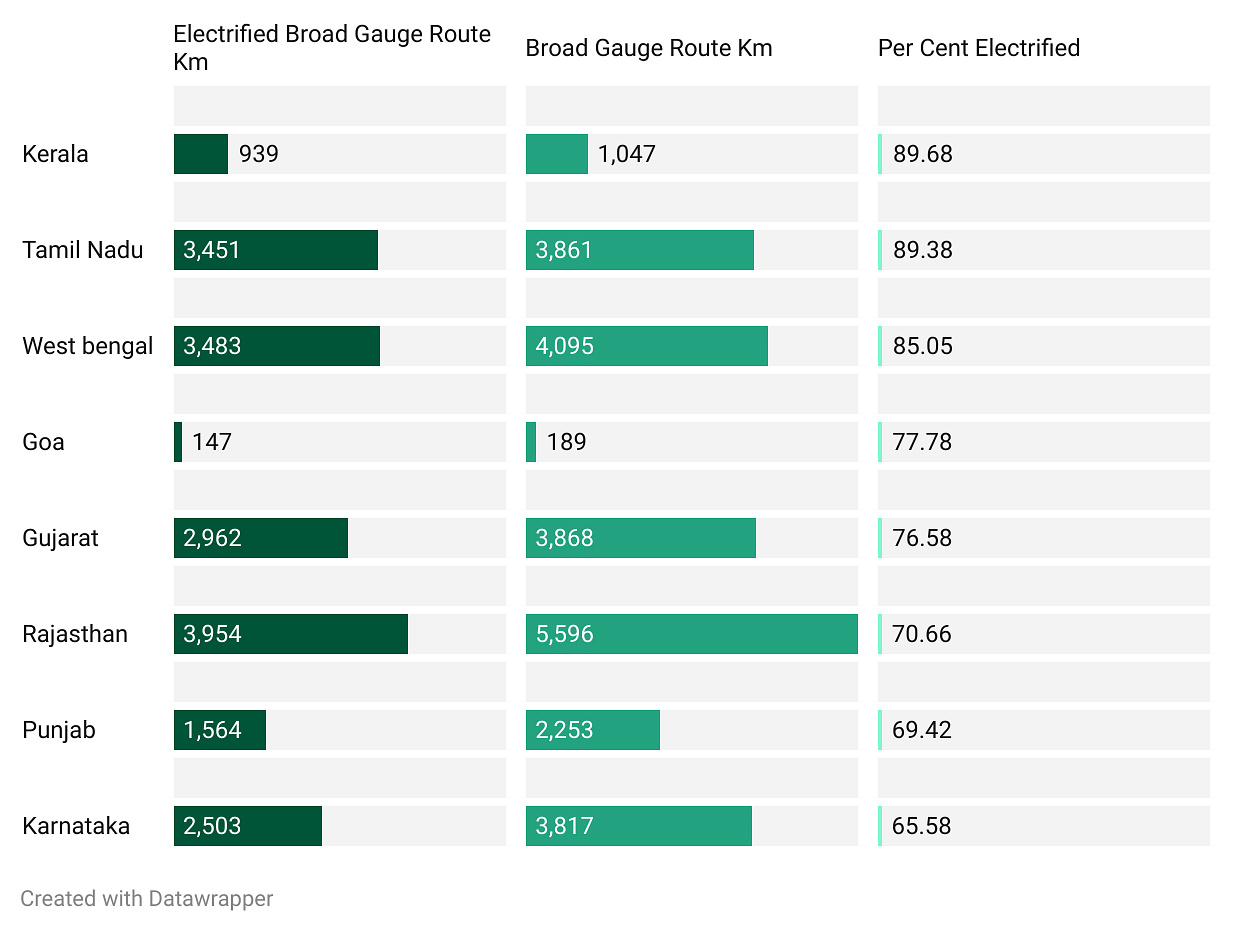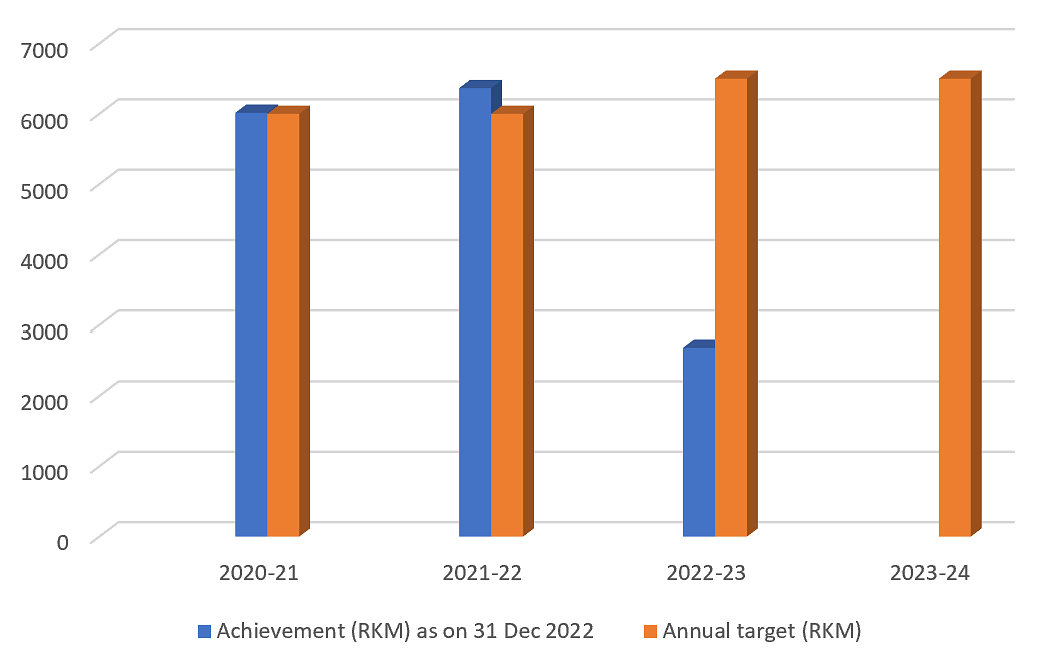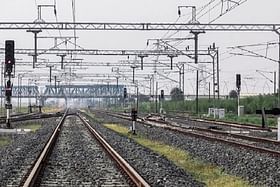In its mission to make the entire rail network of the country run on electric traction, Indian Railways has completed electrifying all broad gauge (BG) routes in 12 states and union territories (UTs), as on 31 March 2023.
Replying to a question in Lok Sabha, Union Rail Minister Ashwini Vaishnaw said that 100 per cent BG routes have been electrified in four UTs — Puducherry, Chandigarh, Jammu and Kashmir, Delhi, and eight states — Odisha, Haryana, Chhattisgarh, Himachal Pradesh, Uttarakhand, Uttar Pradesh, Jharkhand and Madhya Pradesh.
These 12 states and UTs account for 22,374 route kilometre (RKM) of the total BG route electrified.
The RKM of broad-gauge network electrified in these UTs and states stand at: Puducherry (21), Chandigarh (16), J&K (298), Delhi (183), Chhattisgarh (1,170), Odisha (2,822), Haryana (1,701), Himachal Pradesh (67), Uttarakhand (347), Uttar Pradesh (8,434), Jharkhand (2,542) and Madhya Pradesh (4,773).
With respect to other states, more than 90 per cent RKM has been electrified in Andhra Pradesh (96.87 per cent), Bihar (95.13 per cent), Telangana (92.57 per cent), and Maharashtra (90.46 per cent).
The status of electrification in remaining states can be seen in the chart below:

In North eastern region, no electrification has been done in any state except Assam, where 621 RKM out of 2,491 RKM has been electrified. Notably, the BG route length in these states is Arunachal Pradesh (12), Manipur (13), Meghalaya (9), Mizoram (2), Nagaland (11), and Tripura (265).
Overall Progress
The Lok Sabha was also informed that 56,248 RKM (i.e., 86.35 per cent) has been electrified out of 65,141 RKM of Indian Railways Broad Gauge Network.
With this, Indian Railways has completed electrification of BG routes in seven zonal railways namely, East Coast Railway, North Central Railway, North Eastern Railway, Eastern Railway, South Eastern Railway, West Central Railway, and Central Railway.
The Central Railway zone became the seventh zone to achieve 100 per cent electrification in March 2023 by electrification of the entire BG network of 3,825 RKM.
The electrification on balance 8,893 RKM BG route is under different stages of execution and has been planned for completion in mission mode.
Yearly Progress
Since 2020-21, the Railways has achieved electrification in more routes than the fixed target. It is worth mentioning that record electrification of 6,366 RKM was achieved in Indian Railways’ history during 2021-22. Earlier, highest electrification was 6,015 RKM during 2020-21.
The yearly progress of electrification project is mapped below:

As regards the target for FY 2022-23, actuals were only 2,686 km against the target of 6,500 km upto 31 Dec 2022. For the year 2023-24 a target of 6,500 km has been set by the Ministry of Railways.
Reason for Electrification
Railway electrification in India began with the first electric train, between Chhatrapati Shivaji Terminus and Kurla on the Harbour Line, on 3 February 1925, on the Great Indian Peninsula Railway (GIPR) at 1,500 V DC.
The Indian Railways uses 25 kV 50 Hz AC traction on all its electrified tracks.
Electrification offers numerous benefits, including saving over Rs150 crore on fuel bill every year, seamless operations, pollution-free mode of transport, increase in average speed, as well as, throughput on the section.
The Railways has planned to fully electrify its tracks by December 2023.
Total rail electrification would contribute to the goal of “net zero” emissions by 2030 by drawing its entire electrical load from renewable energy sources, it said.


